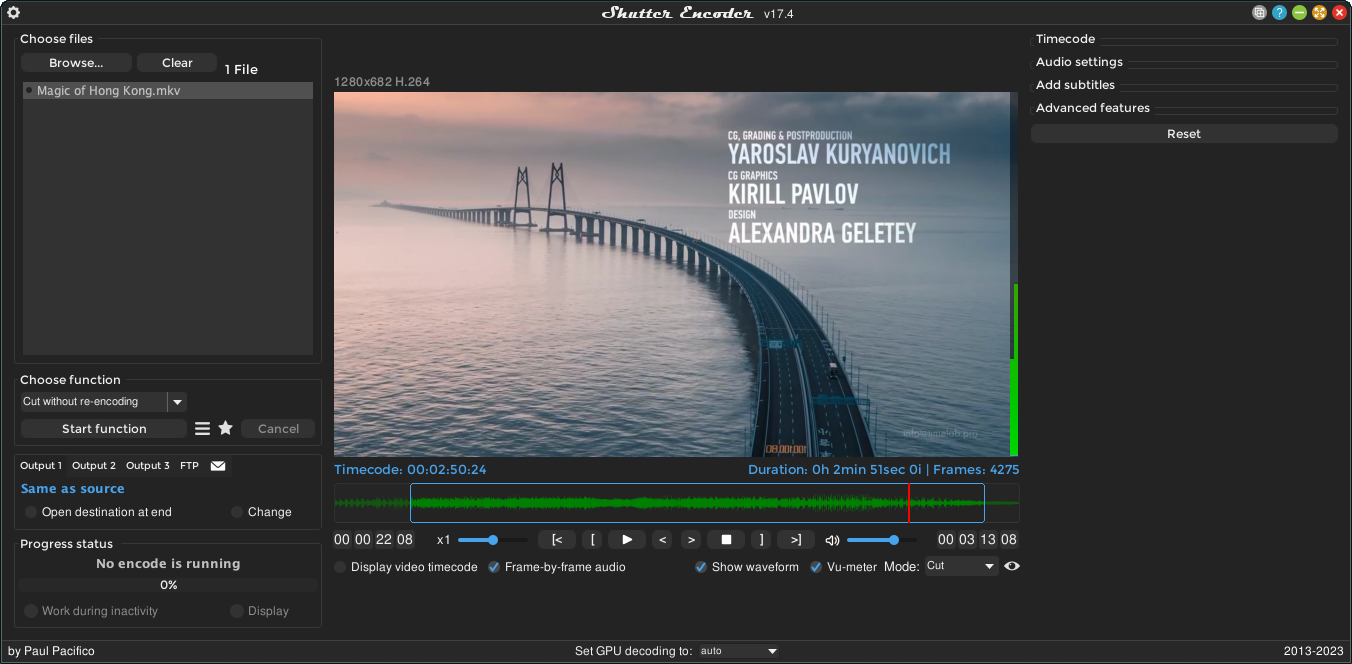

Apple Guides & Specials (opens in new tab) (opens in new tab) Why subscribe. Use skvideo.io.vreader to load any video (here bigbuckbunny ) frame-by-frame. Here’s how you can extract them using ffmpeg Skip to main content. So we can extract I-frames only to get a fair amount of information from the video and reduce the extracted frame number. This is because the P/B frames coming after an I-frame might depend on the contents of frames preceding this I-frame So for MPEG-2 an IDR frame (keyframe) is just an I-frame with the. MPEG-2 has I-frames, but not all I-frames are keyframes, or 'IDR' frames as theyre called. Now we can use some shell-fu to filter just the keyframes, and show only the timestamps: ffprobe -loglevel error -select_streams v:0 -show_entries packet=pts_time,flags -of csv=print_section=0 input.mp4 | awk -F',' '/K/ ', is responsible for filtering for lines with a "K" in them and then only printing the first part before the comma, the timestamps. Output a single frame from the video into an image file: ffmpeg -i input.mov -ss 00:00:14.435 -vframes 1 out.png Output one image every second, named out1.png, out2. skvideo.io is a module created for using a FFmpeg/LibAV backend to read. For example, I dont think VP9 uses the term I-frame, just keyframes. The format option may be needed for raw input files. To force the frame rate of the input file (valid for raw formats only) to 1 fps and the frame rate of the output file to 24 fps: ffmpeg -r 1 -i input.m2v -r 24 output.avi. The K_ indicates the frame at that timestamp is a key frame. To force the frame rate of the output file to 24 fps: ffmpeg -i input.avi -r 24 output.avi.

Run this command to get every frame's timestamp and flags:įfprobe -loglevel error -select_streams v:0 -show_entries packet=pts_time,flags -of csv=print_section=0 input.mp4 You can use ffprobe for this, but it's not exactly simple.


 0 kommentar(er)
0 kommentar(er)
